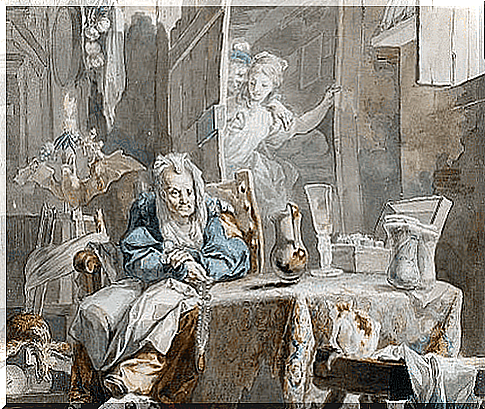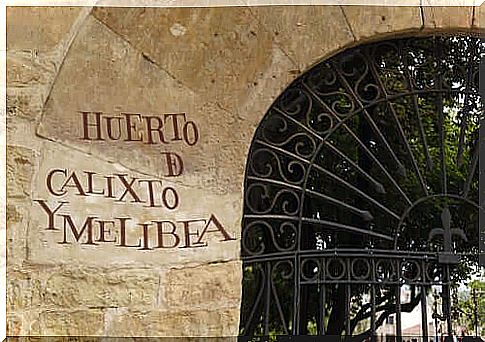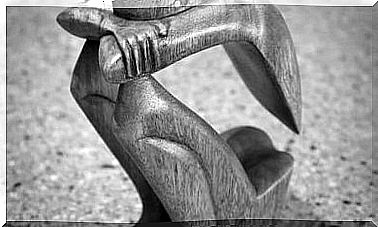La Celestina: Character Psychology

La Celestina is a literary work that raises several questions. For this reason it is so interesting, especially as regards its characters. Each of them has their own psychology that characterizes them and entrusts them with a fundamental role in the development of the work.
Focusing on the characters that Fernando de Rojas has conceived with such meticulousness and care is a classic way to approach this literary work, considered a tragicomedy, according to the article Love and Chastity in two English version of La Celestina.
So let’s see how this Spanish writer defined the psychology of all the characters that appear in this 15th century book. Before continuing with the reading, we inform you of the presence of information relating to the end of the narrated story.
The characters in La Celestina
In La Celestina we come across 13 characters who have an important role in the development of the work. Although the lovers, Melibea and Calisto, are the main pivot of this tragicomedy, the other figures that appear also have their importance.

La Celestina
La Celestina is an old lady, famous because she is able to make people fall in love with special tricks. Despite the help offered to Calisto to make Melibea fall in love with him, Celestina is a woman with the following characteristics:
- He has no qualms.
- Just aim for your own interest.
- He has a great ability to persuade.
- She is lustful.
Melibea
Melibea is one of the protagonists of La Celestina ; initially she is not attracted to Calisto. The clear refusal he manifests is observable in a notable pride and even haughtiness. However, following the help Calisto receives from Celestina, the girl’s change is sudden and surprising.
She goes from refusal to absolute dedication, where it is she who shows the most spirit of initiative to see Calisto secretly. All this will result in an extreme romantic love, a term often used in psychology and which leads to an unfortunate ending.
Calisto
Calisto is infatuated with Melibea, he is not moved by love, but by the desire to obtain the object of his desires. This transforms him into a selfish person, who does everything (like turning to Celestina) to get what he craves so much, regardless of the consequences.
Therefore, he shows himself as an insecure and immature person. We are talking about a young dreamer who does not manage the frustration of his expectations as best he can. When these are not fulfilled, it goes into crisis, in this case due to Melibea’s resistance.
Other characters from La Celestina : Sempronio and Parmenus
Parminus is the servant of Calisto ; his features respond to those of a loyal character, who goes out of his way to take care of his lord; warns him not to put his trust in Celestina. However, this loyalty collapses because Calisto humiliates him and doesn’t believe his words.
Sempronio is another servant of Calisto, who proves to be a liar with false intentions. Unlike Parminus, from the beginning he takes advantage of his lord, trying to steal as much money as possible from him. All this while always preserving appearances.
Impersonator and Tristan
Impersonator and Tristan are Calisto’s loyal servants who were once servants in a stable. The first is presented as a person who falls blindly in love, therefore becomes madly infatuated with Areusa, who manipulates him to steal information about his master.
For his part, Tristan presents himself as a very devoted servant. Both Tristan and Sosia are Calisto’s friends rather than servants. A pure friendship, without ulterior motives.
Lucretia
Lucrezia is Melibea’s servant and her faithful confidant. The two tell each other everything, especially from a love point of view, finding comfort in each other in their own anxieties and misadventures. Thanks to Lucrezia, Calisto and Melibea can meet every night.
Lucrezia was a prostitute, but she decides to change her life and devote herself to servitude. However, his character is the archetype of an envious person. He feels jealousy of his old friends, as well as of the love encounters between Melibea and Calisto.
Elicia and Areusa
Elicia is a prostitute who works for Celestina. It has an impulsive, contradictory and contemptuous character. This character lives in the present. However, when her patron dies she seeks revenge, because she feels alone and over.
Areusa is another of Celestina’s prostitutes. Unlike Elicia, this character is independent, free and resentful. She looks a lot like Celestina, as she knows how to manipulate others. And it does it paired with Centurio.
Centurio
Centurio lives alongside prostitutes, in the role now called the “protector”. He is described as a pimp, contemptuous, lustful and a liar. He usually exploits prostitutes to get what he wants.
Although he presents himself as a person who imposes his presence, due to his bad temper and his apparent intrusiveness, in reality that courage is only facade. After all, he is a cowardly character.

Pleberio and Alisa
Pleberio is Melibea’s father and presents himself as a very old and always very busy man. When Melibea dies, her life loses all meaning. He is a character who is really worried about his daughter, especially since he would like her to get married.
Alisa is the mother of Melibea. She plays a secondary role, as she is overshadowed by her husband. It is a very naive character, who does not trust anyone. For this, he allows Celestina to enter his house.
The evolution of the characters in La Celestina
The psychological characterization of the characters in this work by Fernando de Rojas is very colorful; however, it is precisely this that allows a clear evolution to be perceived.
All of them change. Melibea goes from rejection to the most absolute love for Calisto, Elicia goes from total carelessness to the search for revenge for Celestina’s death. Everyone has an important and fundamental role. Have you read the book of La Celestin a? Have you noticed how Fernando de Rojas has psychologically characterized his characters?








